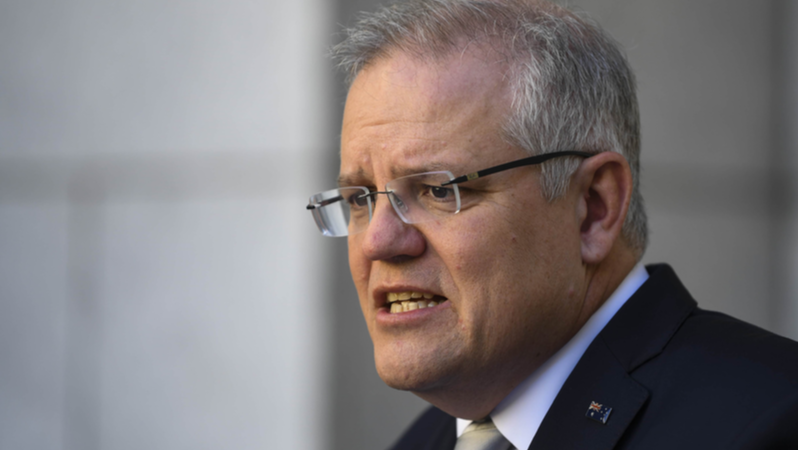Slogan-led strategy isn't working
February 26 2021

Note: This article appeared in The Australian Financial Review on February 26 2021.
Australia’s China relations problem has two parts. The first is China’s bad behaviour: unleashing trade punishment, spreading misinformation, refusing to engage in dialogue, and more.
The reality of what Australia faces must be recognised and not excused. And it demands a serious strategy in response.
This leads to the second problem: Australia’s current strategy is best described as a collection of slogans that appear to reflect wishful thinking more than considered calculations grounded in evidence.
The present approach serves as self-medication, making us feel better about our predicament, and providing temporary relief from having to admit deeper drivers of tension and a need to make tough choices in a world less accommodating of Australia’s preferences.
But in the longer term, the national interest is left exposed.
According to Scott Morrison, ‘Australia has done nothing to injure [the] partnership [with China], nothing at all.’
This leads to a doctrine of exercising 'strategic patience' and waiting for a new ‘settling point’ where the two countries live in ‘happy coexistence’.
But even leaving aside the questionable determination that everything is China’s fault, what do ‘strategic patience’ and a new ‘settling point’ mean in practice? That China will eventually bend to Australia’s wishes? And why, precisely, can Australians be confident that the current course makes ‘happy coexistence’ attainable?
True, there’s no need for Australia to panic. China has, for example, been unable or unwilling to wean itself off big-ticket items in the trade relationship, such as iron ore. This meant that the total value of Australia’s goods exports to China fell by just 2 per cent in 2020, the second highest annual figure.
Domestic public opinion is also firmly behind the government to not capitulate in the face of China’s provocations.
But as the months and years unfold, the Morrison government will find itself on shakier ground.
For starters, it will be called on to explain why it’s best strategic mates, the Five Eyes intelligence-sharing partners, are among those wresting away profitable markets in China from Australian producers.
It’s already begun: Canadian miners are proving eager to satisfy China’s demand for coking coal, while New Zealand’s lobster fishermen are enjoying sky-high prices for their produce.
The main factor stopping Californian winemakers taking full advantage isn’t a commitment to the ANZUS treaty. It’s the self-inflicted harm caused by the Trump administration’s decision to launch a trade war against China, and Beijing putting retaliatory tariffs on US exports in response.
It would be brave to imagine that a Biden administration with a stated foreign policy goal of delivering for America’s middle class won’t seek to get rid of these tariffs in time.
The Prime Minister will also have to explain why capitals from Washington to Wellington are able to deal directly with Beijing, furthering their interests, while Canberra cannot.
In January 2020, the US struck a bilateral trade pact with China. A year later the European Union concluded negotiations on an investment accord. The same month New Zealand announced an upgrade of its free trade agreement with China. In contrast, the last meeting Australia had with Chinese officials to upgrade our FTA was in November 2017.
As Allan Gyngell, former boss of the Office of National Assessments, remarked in January: ‘If the Americans are talking [to Beijing] and the Australians are not, we’re in a much weaker position than we were. We don’t want the US to be our voice in Beijing; we want our own voice.’
China’s President Xi Jinping will feel time is on his side.
Over a five to 10-year horizon, he will have an opportunity to develop alternative sources of supply for Australian iron ore. Structural trends in China’s economy anyhow point to falling demand over time.
Sure, Australia can seek to diversify away from China, too. But a decoupling race is not one that Australia – with its $US1.4 trillion ($1.8 trillion) economy and around one-third of total trade involving China – can win.
China’s $US14.3 trillion economy, with less than 4 per cent of trade involving Australia, is orders of magnitude less vulnerable.
And even if a complete economic decoupling were achieved, China’s strategic and military heft would still be there, more stirred against Australia than ever.
Yet nowadays any talk of how some of China’s grievances might be accommodated with a view to easing tensions is likely to be cast as a selling out of Australia’s ‘sovereignty’. Doubling down on the current immutable, slogan-led approach is apparently the only option available.
Curiously, no other country in the region has reached the same conclusion.
Australia is not an American lapdog, as Beijing’s propagandists like to claim. But as China exerts its power in uncomfortable ways, the fear of abandonment that has long shaped how Australia acts in the world is rising and the urge to cleave more tightly to a great and powerful friend is stronger than ever.
That’s an unfortunate tick in the national psyche when China’s fundamental dispute with Australia is an assessment that Canberra has not only aligned itself with US to attack its interests, but done so with flamboyance.
Professor James Laurenceson is Director of the Australia-China Relations Institute at the University of Technology Sydney.

